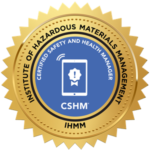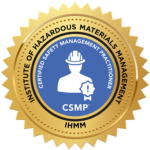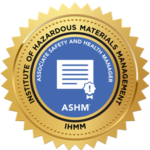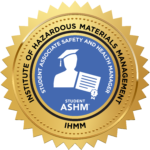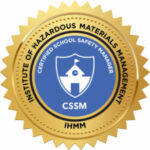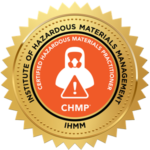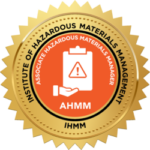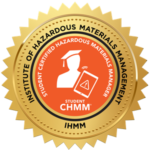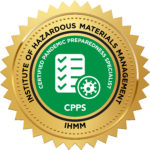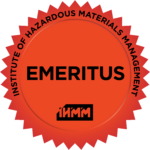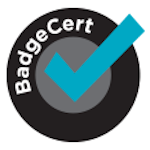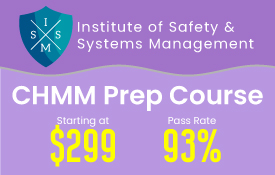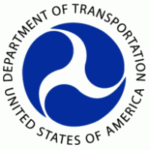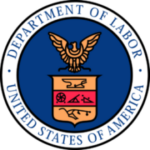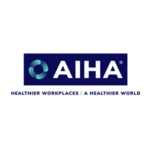Home | IHMM Credentials | Certificants | About IHMM | Event Calendar | Archive | Advertise with IHMM
IHMM Today is an online publication of the Institute of Hazardous Materials Management® (IHMM®).
Other than content specifically provided by IHMM, articles contained in IHMM Today are compiled from
independent sources and do not necessarily reflect the opinions of IHMM.
CONTACT INFO:
9210 Corporate Blvd • Suite 470 • Rockville, Maryland | 20850
Ph: 301-984-8969 • [email protected]

Happy Thanksgiving from IHMM
Wishing everyone a happy, healthy, and safe Thanksgiving! We hope this season brings you warmth, gratitude, and time with those who matter most. Please note that IHMM’s offices will be closed on Thursday, November 27th, and Friday, November 28th. Enjoy a well-deserved break, and thank you for all you do to support excellence in our profession.
The Value of IHMM Credentials
Below you will see the credential badges from BadgeCert that are now in each CHMM, CHMP, CDGT, CDGP, AHMM, Student CHMM, CSHM, CSMP, CSSM, ASHM, and Student ASHM certificant’s MYIHMM account. Every IHMM certificant may use these badges, linked as those below are to their IHMM credential page, for their email signatures, business cards, and other social media applications. You’re justifiably proud of the accomplishment of having earned your credential, and you can show the rest of the world.
Follow IHMM on Social Media
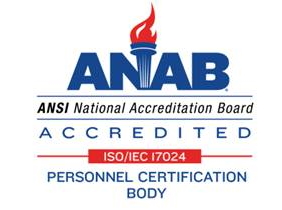
IHMM Credentials Accredited By

NEED HELP?

Need Help? On the IHMM website, just click on the “NEED HELP?” button
and let us know what you need, and the right person will get back with you.
IHMM RECENT NEWS

HAZARDOUS MATERIALS/DANGEROUS GOODS
EPA Preliminarily Determines that 1,2-Dichloroethane Poses Unreasonable Risk to Human Health and the Environment
PHMSA Implements New Data-Driven Framework for Hazmat Transportation Inspection and Enforcement Standards
Blog: Labor Standards Enforcement – What Contractors Should Know Today
EPA moves to approve new ‘forever chemical’ pesticides
Delhi, India: Lethal smog is back in the world’s most polluted capital. Residents have had enough
Toxics surge in NC rivers after Helene
Melanoma Rates Are Spiking Fast in These 15 Pennsylvania Counties
Plastic-eating Bacteria Discovered in the Ocean
New Mexico to Proceed with Rulemaking to Implement PFAS Law
TSCA PFAS Reporting- Implications of EPA’s New Statutory Interpretation on Articles
Federal Agencies Propose Sweeping Revisions to Endangered Species Act Regulations, Largely Reinstating 2019–2020 Framework

EHS/WORKPLACE SAFETY
Beyond Management of Change: Six Steps to Effective Change Management
Steer Clear of Trouble With Z15.1
After the Shutdown: How Safety Professionals Can Keep Momentum Strong
How to Effectively Manage the Chemical Inventory at Your Workplace
Support grows for bill aimed at giving OSHA protections to public workers
Unions to EPA: Changes to chemical evaluations and TSCA would harm workers
ISEA urges Trump administration to exempt PPE from tariffs
Is your safety program built for your business, or borrowed from someone else’s?
UConn’s Korey Stringer Institute Opens New Occupational Heat Safety Lab with Industry Partner Support
Mastering preconstruction: How to set up projects for success
The Hidden Cost of Occupational Illnesses and Diseases
Inside IHMM
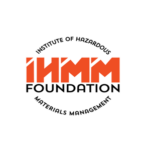
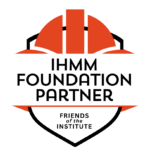
This symbol reflects
the company strongly
supports IHMM certificants
Professional Development

Hartwick College Joins IHMM Student CHMM Program
The IHMM Student CHMM Committee, led by the dynamic Meg Olsen, CHMM, is thrilled to welcome Hartwick College into the IHMM Student CHMM Program! 🎉
This marks an exciting new chapter for the program, as the Committee continues to drive innovation and engagement—enhancing the Student CHMM Handbook, refining the Student CHMM examination, expanding the item bank, inviting more colleges and universities to join, and strengthening the Student CHMM community through Collaboration and the Mentor Match program.
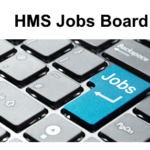
The IHMM Foundation Jobs Board
We invite our participating companies to post their available employment opportunities here. There is no charge for this service. IHMM Foundation/HMS staff reviews each proposed posting for clarity and completeness before posting to the public view and may remove a posting without notice. Go here to post your available jobs.

Research and Resources For You
The IHMM Foundation/HMS is committed to the continued growth of IHMM’s certificants and to supporting them in every way we can. We achieve this through work that aims to gain insights that align with our mission to educate, develop, inform, and unite the hazardous materials, dangerous goods, and environmental health and safety communities of practice.
IHMM’s certificants will find important resources that most of our certificants use. If you don’t find what you need, use the button below to let us know and we will get it and post it here for you.
If you are you looking for additional resources not listed on this page? We can help!
IHMM Research is found at https://hazmatsociety.org/research/
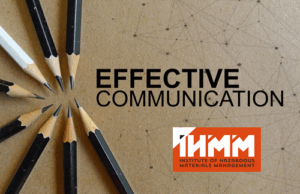
IHMM’s Unprecedented Outreach: Elevating Excellence Worldwide
2025 marks another milestone moment for IHMM! In our first 10 months, we have sent 7.6 million messages to thousands of private and public sector entities, amplifying awareness of IHMM, our prestigious credentials, and the dedicated professionals who hold them.
This momentum is more than just numbers; it’s a testament to our unwavering mission. Every day, across 50 states and 85 countries, IHMM champions the critical role of its credentialed professionals, setting standards of excellence in environmental, health, and safety fields. Together, we are shaping the future—one message, one connection, one breakthrough at a time!
7,652,738
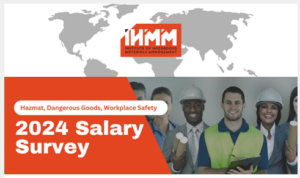
IHMM Salary Survey Results
IHMM is pleased to release the survey of salaries underlying the hazardous materials/dangerous goods credentials salaries by job title, as well as the survey of salaries underlying the workplace safety credentials salaries by job title. You may download these surveys as linked below.
IHMM launched its “Open to Work” online COLLABORATION community exclusively for IHMM certificants looking to connect, share resumes, and discover job opportunities together in a supportive environment.
You can find this community after logging into COLLABORATION here: https://community.ihmm.org/home
#1 – Recertification Video
#2 Recertification Video
IHMM Recertification Videos
Congratulations. After hard work and dedication, you earned your professional credential. Now, every 5 years, you will need to recertify your valuable credential. Over 5 years, you need to earn 200 certification maintenance points or CMPs. You receive 100 CMPs for the job you perform, and then need to earn a minimum of another 100 CMPs in a variety of ways, demonstrating your commitment to continuous improvement and remaining current with the demands of your profession and our communities of practice.
Considering everything you did to achieve certification, don’t let it go to waste by failing to recertify.
Upholding Integrity: The Updated IHMM Code of Ethics
At IHMM, integrity isn’t just a principle—it’s the foundation of everything we do. Our Code of Ethics is the guiding standard for all IHMM Certificants, ensuring that professionals in hazardous materials, dangerous goods, environment, health, and safety uphold the highest levels of honor, trust, and responsibility in their work.
By committing to this Code, Certificants reinforce their dedication to excellence, ethical conduct, and public safety. Violating these standards isn’t an option—those who do may face disciplinary action from a peer review panel, including credential suspension or revocation.
We’ve recently updated our Code of Ethics to reflect evolving industry standards and best practices. Stay informed, stay accountable, and continue leading with integrity.
📜 Explore the updated IHMM Code of Ethics here: IHMM Code of Ethics
🎥 Watch the latest Code of Ethics video below!
IHMM Mentors Support
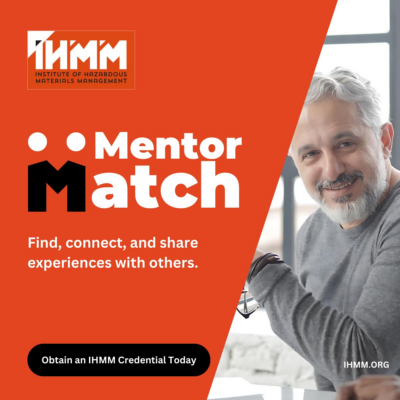
Welcome to the Future of Professional Growth with IHMM’s Mentoring Program!
Are you ready to take your career to the next level? Dive into a world of opportunity and advancement with IHMM’s dynamic mentoring program! Our experienced mentors are here to share their expertise, offer personalized guidance, and help you navigate both credential exams and everyday work challenges.
✨ Unlock Your Potential: Learn from industry leaders and accelerate your professional journey. ✨ Tailored Support: Receive personalized advice and strategies to overcome your unique challenges. ✨ Build Connections: Join a vibrant community of professionals eager to support and inspire each other.
Whether you’re a newcomer in the field or seeking to hone your skills, IHMM’s mentoring program is your gateway to growth and success. Stay tuned for inspiring stories, valuable tips, and exclusive insights from our mentors!
Embark on a journey of discovery and achievement with us. Welcome aboard!
IHMM’s Collaboration platform contains a “Mentor Match” module [see below at right] that allows mentors to signup designating the hours, number of mentees, subject areas, and length of time they wish to mentor – as well as enabling mentees signup requesting assistance in specified areas. The mentor match module does the rest by matching mentors and mentees.


Regulatory Updates
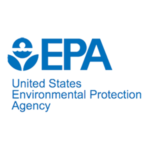
IHMM Issues Memorandum – EPA – Updated Definition of Waters of the United States
On November 17, 2025, the U.S. Environmental Protection Agency and the Department of the Army (“the agencies”) announced the signing of a proposed rule to revise the definition of “waters of the United States.” This proposal implements the Supreme Court’s decision in Sackett v. EPA. The proposed rule will play a key role in EPA’s Powering the Great American Comeback initiative by protecting water resources, strengthening cooperative federalism, and supporting American industry, energy producers, the technology sector, farmers, ranchers, developers, businesses, and landowners.
In developing the proposed rule, EPA and the Army reviewed and considered the extensive feedback and recommendations the agencies received from States, Tribes, local governments, and stakeholders throughout consultations and the pre-proposal recommendations docket and listening sessions.

PFAS Reporting Rule Update for CHMMs & CHMPs
Deadline for Comment: December 15, 2025
Risk Matrix for CHMM/CMHP and the Proposed Rule
EPA has proposed significant amendments to its PFAS Reporting and Recordkeeping Rule under TSCA § 8(a)(7). The revisions introduce new exemptions—including a 0.1% de minimis threshold, PFAS in imported articles, non-commercial byproducts and impurities, non-isolated intermediates, and PFAS used solely for R&D. These changes are designed to reduce regulatory burden while preserving critical PFAS reporting requirements for 2011–2022.
For IHMM certificants, the rule remains directly relevant. CHMMs and CHMPs are often responsible for identifying PFAS in materials, auditing historical data, classifying wastes, documenting releases, and ensuring TSCA-compliant reporting. EPA continues to require “known or reasonably ascertainable” information, meaning organizations must search existing records—including SDSs, waste manifests, analytical reports, and supply-chain documentation—to determine whether PFAS were manufactured, used, disposed of, or released. See the Risk Matrix above.
The proposal reinforces core CHMM and CHMP competencies across hazardous materials identification, recordkeeping, waste management, and environmental assessment. IHMM certificants remain essential to organizational compliance and risk reduction as PFAS regulations continue to evolve.
IHMM is preparing comments to submit in response to this proposed rulemaking, and we will provide updates, tools, and training to support our certificants’ leadership in PFAS management.

IHMM – Workplace EHS Coalition Supports OSHA/NIOSH Funding
IHMM, and the Workplace EHS Coalition of which IHMM is a part, is writing to Congressional appropriators in support of funding OSHA and NIOSH, following up on our call for funding those organizations first made last May. With the shutdown over and Congress now back, we have prepared a letter to key House and Senate appropriations subcommittee leaders supporting robust funding levels for OSHA and NIOSH in any full-year FY2026 spending deal.
Fall 2025 Letter to Congress OSHA/NIOSH
The Workplace EHS Coalition (formerly known as the Intersociety Forum) is a coalition of organizations, including ASSP, dedicated to safeguarding worker safety and health and promoting the fact that safety practices create a strategic advantage that powers enduring business success while fostering innovation and protecting workers.
Despite advancements, workplace injury and fatality rates remain stagnant. By adopting proactive, risk-based safety strategies, businesses can unlock greater productivity, reduce costs, and strengthen their global competitiveness. The Workplace EHS Coalition urges today’s business leaders and policymakers to prioritize occupational EHS as a foundation of economic competitiveness. Adopting this approach will position the U.S. as a global leader in safety, innovation and workforce well-being, enabling workers and businesses to thrive.
Important Stories for IHMM Certificants

Environmental News for This Week
During this week, the EPA, in conjunction with the U.S. Army Corps of Engineers, announced a proposed rule to significantly narrow the scope of federal jurisdiction under the Clean Water Act (“CWA”) by redefining the term Waters of the United States (WOTUS). Under the proposal, only relatively permanent water bodies (such as lakes, rivers, streams) and wetlands with direct surface connections to those bodies would qualify for federal protection.
Environmental groups are raising immediate alarms, warning that the rollback may reduce protections against flooding, impair wildlife habitats, and undermine water-quality safeguards tied to climate resilience. From a legal and regulatory perspective, this proposed rule raises several key implications:
For regulated entities, potential reduction in permitting obligations and federal oversight, but also increased state-by-state fragmentation and litigation risk from affected stakeholders.
For credentialing bodies and organizations (such as IHMM) providing advisory or compliance services in environmental management, increased need to monitor shifting jurisdictional boundaries and state/federal interplay.
For accreditation and regulatory exposure, the narrowing of “waters” may affect how environmental impact assessments, wetlands mitigation, and hydrologic-connectivity analyses are defensibly documented under the CWA and associated state programs.
In conclusion, the week’s developments signal a notable regulatory pivot in federal water-resource jurisdiction. Stakeholders should prepare for substantive rule-making, comment-period exposure, potential litigation, and downstream compliance complexity.

Ohio Supreme Court Says Courts Must Not Defer to the Industrial Commission
The Ohio Supreme Court ruled on Oct. 16, 2025, that state courts should not defer to the Ohio Industrial Commission’s interpretations of Ohio’s safety laws or administrative rules when reviewing whether an employer violated them. The ruling in State ex rel. Berry v. Indus. Commission came after a worker appealed a commission ruling that he was not entitled to a Violation of Specific Safety Requirement (VSSR) award.
What’s the background?
Administrative law judges in the Ohio Industrial Commission hear appeals of Ohio Bureau of Workers’ Compensation (BWC) decisions. The Commission has exclusive and final jurisdiction to determine whether an injury, disease, or death resulted from an employer’s failure to comply with any specific safety requirement. Ohio employees may be entitled to VSSR awards when a workplace injury results from an employer’s violation of a safety requirement.

Workplace Safety News This Week
During this week, a key regulatory development warrants immediate attention: OSHA reported receipt of approximately 50,000 public comments on its proposed Heat Injury and Illness Prevention rule. IHMM was one of those commenters. This rule, under the title “Heat Stress in Outdoor and Indoor Work Settings,” would require employers to implement specific controls (e.g., water, shaded rest areas) once work-site heat indices reach defined thresholds. Many employers and trade associations argue a rigid national standard may be unworkable across diverse industries.
From a legal-risk and compliance perspective:
Employers should anticipate a final rule timeline and begin gap-analysis of current heat-illness prevention programs.
The comment volume signals that OSHA may impose broader enforcement tools or use the General Duty Clause to address heat hazards.
Preparatory steps now may mitigate future citations or liability arising from heat‐related injuries.
In sum: The OSHA rule-making on heat stress is advancing into its next phase. Employers, especially those with outdoor or high-temperature indoor operations (construction, warehousing, manufacturing, agriculture), must evaluate their readiness and update safety programs accordingly.
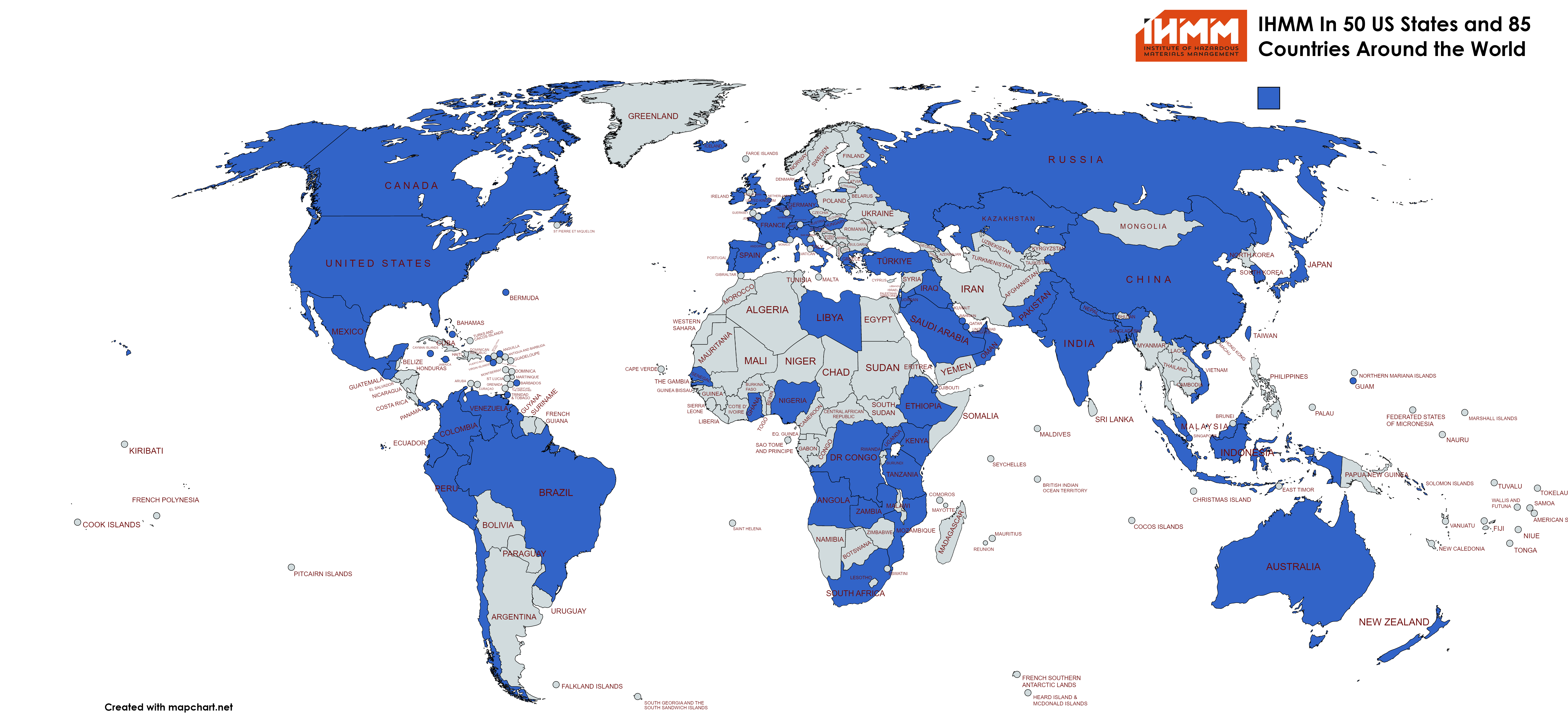
DG Transportation Issues
IHMM Global DG Transport Compliance Matrix (2025–2026)
IHMM Certificant Compliance Checklist
For the week of November 24, 2025, the law of dangerous goods (“DG”) transport is not marked by a new headline-grabbing treaty, but by a set of quiet but important procedural and enforcement shifts under UNECE/UN auspices and in key national systems. What follows is a region-by-region analysis, written as counsel, of the developments most relevant to IHMM certificants and other DG professionals.
I. Global / UNECE: UN Model Regulations and ADR Architecture
A. UN Sub-Committee of Experts on the Transport of Dangerous Goods (UN-SCETDG-67)
On 24 November 2025, the 67th session of the UN Sub-Committee of Experts on the Transport of Dangerous Goods convenes in Geneva (24 November–3 December 2025).
This Sub-Committee is the body that drafts and updates the UN Model Regulations (the “Orange Book”), which in turn form the technical backbone of:
ADR (road),
RID (rail),
ADN (inland waterways),
and the maritime/air codes (IMDG, ICAO TIs).
Multiple informal documents (INF) dated mid-November have been filed in advance of this session. Their contents are not yet publicly accessible in detail due to UNECE hosting restrictions, but procedurally, this session will:
Consider amendments that will become the 24th revised edition of the UN Model Regulations, building on the Committee’s decision of December 2024.
Set the trajectory for the next full cycle of ADR, RID and ADN amendments.
For practitioners, the legal point is this: any change adopted in Geneva over the next ten days will cascade—with a typical lag of 2–3 years—into ADR 2027 and into national DG transport law across Europe, parts of Asia, Africa, and the Americas.
B. ADR Certificates and Multilateral Agreement M363
UNECE’s DG portal highlights two specific ADR-related items posted 20–21 November 2025:
“ADR Driver training certificates: Uzbekistan (update)” – UNECE has uploaded updated models of ADR driver training certificates for Uzbekistan, noting that the models in use since 8 October 2020 have been revised as of November 2025.
“ADR Multilateral agreements: Sweden signed M363” – Sweden has joined Multilateral Agreement M363, an ADR instrument allowing Contracting Parties to deviate jointly from certain ADR provisions under controlled conditions.
These actions are not new “laws,” but they are formally notified treaty practice:
The Uzbekistan update confirms that its ADR driver certificates comply with ADR 8.2.2.8.5 requirements for format and content, which matters for roadside recognition and mutual acceptance.
Sweden’s accession to M363 extends the geographical coverage of that derogation, which logistics counsel must consider when routing ADR consignments through or out of Sweden.
II. United States: PHMSA’s Data-Driven Enforcement Framework
The most concrete national-level development this week comes from the United States.
On 20 November 2025, PHMSA issued a press release titled “PHMSA Implements New Data-Driven Framework for Hazmat Transportation Inspection and Enforcement Standards.”
The release announces:
A first-of-its-kind memorandum within the Office of Hazardous Materials Safety (OHMS) that sets data-driven priorities for outreach, inspection and enforcement.
An explicit focus on high-risk DG actors, including:
General hazmat shippers,
Cylinder manufacturers and requalifiers,
Drum manufacturers and recertifiers,
Companies with prior major violations,
Lithium-battery shippers, and
Undeclared hazmat shippers operating via e-commerce platforms.
Legally, this does not immediately amend 49 C.F.R. Parts 171–180. It is instead an enforcement-policy instrument that will:
Shape how existing DG rules are applied, which entities are inspected, and where civil penalties are concentrated;
Provide regulated parties with an arguable basis to claim predictability and equal treatment, as the memo publicly states the criteria for PHMSA’s focus; and
Increase the practical risk profile for shippers of cylinders, drums, and lithium batteries, and for any entity whose hazmat shipments via e-commerce have been under-declared or misdeclared.
For IHMM certificants operating in or into the U.S. system, this week’s development means that compliance failures in these priority areas now carry heightened enforcement salience even without a change in the underlying Hazardous Materials Regulations.
III. Europe: ADR 2025 Consolidation and EU Harmonisation
A. ADR 2025 and EU Delegated Directive 2025/1801
At the European level, the big legal changes preceded this week but continue to bite operationally:
ADR 2025 (ECE/TRANS/352) entered into force on 1 January 2025 and became mandatory from 1 July 2025, with key technical changes including new UN entries and asbestos-related provisions.
Delegated Directive (EU) 2025/1801, in force since 2 November 2025, introduces new requirements for the labelling of dangerous goods in EU road transport, described by practitioners as “one of the most important amendments to European dangerous goods legislation in recent years,” tightening responsibility allocation and controls.
During the week of November 24, no additional EU-level legislative texts have been adopted; however, Member States are now in the process of transposing Directive 2025/1801 into national law, and operators are adjusting documentation and labelling practices accordingly.
B. ADR Working Party (WP.15) and RID Meetings
Earlier in November, the 118th session of WP.15 (Working Party on the Transport of Dangerous Goods) and RID-related meetings concluded in Geneva, setting the groundwork for the next ADR and RID amendment cycle.
The week of November 24 therefore marks a transition point:
Europe has fully moved into the ADR 2025 regime;
The EU is layering 2025/1801 on top of ADR to harmonise road enforcement and labelling;
And UNECE/UN-SCETDG-67 (see Section I) begins work on future amendments that will eventually become ADR 2027.
IV. Asia and Oceania: Global Framework Meets Regional Practice
No major new DG transport statute or rule specific to the week of November 24 has been identified for China, India, or other Asian states. Existing 2024-2025 updates—such as China’s adoption of new GB standards aligned with UN Model Regulations—remain the dominant changes but are not new this week.
However, two global developments are particularly relevant for Asian carriers and shippers:
The UN-SCETDG-67 session in Geneva (Section I) is the formal venue through which Asian states influence the next UN Model Regulations; and
The International Air Transport Association (IATA) has already announced significant DG changes for the 2026 DGR and the new Battery Shipping Regulations (BSR), with battery-related updates described as “dominating” the 2026 manuals.
For Asia-Pacific operators, the legal takeaway this week is anticipatory:
The regulatory direction of travel is toward stricter, more detailed lithium-battery, packaging and documentation requirements, which will be finalized through the UN and ICAO mechanisms now in session or imminent.
V. Africa: ADR/UN as De Facto Standard, Limited New Text
For Africa, there is no evidence of a major DG-specific statute or regulation being adopted this week. Many African states rely on:
National road-traffic and hazardous-substance laws,
Selective adoption of UN Model Regulations and ADR principles, and
Mode-specific rules issued by civil aviation and port authorities.
In practical terms, this week’s developments that matter to African DG transport are:
The global UN-SCETDG-67 session, which shapes the Model Regulations these states look to; and
The shift in U.S. and EU enforcement practices, which influences expectations for exporters shipping DG into those markets.
VI. Central & South America: Colombian Registry Effective Date Approaches
In Central and South America, the most directly time-linked development is not a new publication this week, but an approaching effective date:
Colombia’s Resolution No. 20243040058015 (28 November 2024) establishes a registry of information for the transport of dangerous goods, with certain obligations coming into force from 30 November 2025.
As the week of November 24, 2025 begins, DG carriers and shippers in and through Colombia are:
Within days of the registry’s entry into force, and
Under a legal obligation to ensure that their DG operations are properly registered and traceable under the new system.
Elsewhere in the region (e.g., Brazil, Mexico, MERCOSUR states), the key DG transport instruments remain earlier 2024–2025 road and multimodal regulations aligned with UN and MERCOSUR DG frameworks, with no new Central/South American DG law visibly promulgated this week.
VII. Overall Legal Assessment for the Week of November 24
From a legal-risk perspective, three themes dominate this week’s DG transport landscape under ADR/UNECE auspices:
Global Norm-Setting in Geneva – The opening of UN-SCETDG-67 (24 Nov–3 Dec 2025) marks the beginning of the next amendment cycle for the UN Model Regulations, which will, in due course, recalibrate ADR, RID, ADN, IMDG and ICAO TI obligations worldwide.
Enforcement, Not Just Text, in the United States – PHMSA’s data-driven inspection and enforcement framework is a legal development in its own right: it changes the probability and focus of enforcement under existing rules, especially for cylinders, drums, lithium batteries, and undeclared hazmat via e-commerce channels.
Consolidation of ADR 2025 and EU Directive 2025/1801 in Europe – While no new ADR treaty text is adopted this week, ADR 2025 is now fully effective and being operationalised alongside Delegated Directive 2025/1801, which tightens EU-level DG labelling and responsibility frameworks.
Add to these the Uzbekistan ADR certificate update, Sweden’s signature of M363, and the imminent Colombian registry, and the legal picture for this week is clear: the structure of DG law is being refined and enforced more aggressively rather than radically rewritten.

Anonymous Reporting Systems
In this excerpt from our podcast series, Understanding Firearm-Related Injury and School Violence, Dr. Libby Messman explains key policies and research findings in violence prevention:
We need to understand what aspects of anonymous reporting systems are effective and what schools need in order to support students’ and teachers’ usage of these systems. Learn more here.
______
School Safety Communications Planning Guide
As a school safety leader, you may be faced with widespread misinformation and polarized public opinions. These often leave your local school boards, administrators, teachers, and parents with mixed messages that make it difficult to discern the truth. According to a 2018 MIT Sloan study, false information is 70% more likely to be retweeted than the truth, causing it to reach more people faster than the truth.
You can help prevent incorrect information sharing and create a positive school climate by initiating preemptive conversations about misinformation and disinformation. Students and families are vulnerable to these types of incorrect information, so it is important to discuss these issues in your school and the community.
One way to be prepared to respond appropriately to incorrect information is to create a crisis response communications plan. You can use preplanned and scripted messages to prevent or stop the spread of inaccuracies on social media platforms. Learn More
_______
External Opportunities
12/17 – Preventing Mass Attacks in Our Communities
Hosted by the U.S. Secret Service
1/21/26 – Enhancing School Safety Using Behavioral Threat Assessment
Hosted by the U.S. Secret Service
2/18/26 – Preventing Mass Attacks in Our Communities
Hosted by the U.S. Secret Service
3/18/26 – Enhancing School Safety Using Behavioral Threat Assessment
Hosted by the U.S. Secret Service
4/15/26 – Preventing Mass Attacks in Our Communities
Hosted by the U.S. Secret Service
5/20/26 – Enhancing School Safety Using Behavioral Threat Assessment
Hosted by the U.S. Secret Service

Recent News from the European Chemicals Agency
- Four substances recommended for REACH authorisation
- Consultations on harmonised classification and labelling
- New intention and proposal to harmonise classification and labelling
- Annual fees for Union authorisations in R4BP 3
- List of biocides suppliers updated
- Science seminar: Protecting workers from reproductive hazards
- ECHA CHEM webinar: material available
- Contract research organisation days: meeting summary published
- Biocides decisions
News from IHMM Affiliates
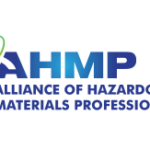
Alliance of Hazardous Materials Professionals
IHMM is affiliated with AHMP and is pleased to bring this important information to all of our certificants.
AHMP News
- 2026 EHS HAZMAT Summit, September 29 – October 1 in New Orleans, Louisiana.
- Who would you like to see as the keynote speaker? We’re looking for thought leaders and changemakers who can energize our community. Send your speaker suggestions to [email protected]
- Exhibit booths and sponsorship opportunities are open: Learn more
- Call for Abstracts is open! Join us as a presenter in 2026
AHMP Webinars
- Join us on December 22 at 3:30 pm Eastern for a Webinar: Continuing Education – Obtaining, Tracking, Credits vs Units, and More!Do you have letters behind your name? Do you have to take continuing education throughout the year to keep up with the points to keep those letters? This webinar, presented by Glorianna L. Reeser, REM, CSRP, CHMM, CSP, will discuss all the things you need to know to do this! Learn More & Register
The Synergist
A Preview of PDCs at AIHA Connect 2026
By Abby Roberts
Although not part of the main three-day conference, professional development courses (PDCs) are important supplements to AIHA Connect programming. These half-day, full-day, and two-day workshops held before and after the conference allow participants to increase their knowledge and technical competencies through learning opportunities that are more intensive, specialized, and hands-on than those supported by conference educational sessions

National Safety Council
IHMM is a member of the National Safety Council and is pleased to bring this important information to all of our certificants.
NSC News
- OSHA’s Top 10
- NTSB shines light on dangers of unsecured railroad equipment
- EPA further delays provisions of trichloroethylene ban
- Association launches survey on ‘PPE pain points’
- Proposed rule would bolster protections for young workers in Colorado
- High-heat hazard alert has recommendations on wearables, acclimatization
NSC Webinars

American Society of Safety Professionals
IHMM is a member of the American Society of Safety Professionals and is pleased to bring this important information to all of our certificants.
ASSP News
- Episode 175: Using Predictive Analytics to Help Prevent Incidents in Your Workplace
- After the Shutdown: How Safety Professionals Can Keep Momentum Strong
- Misses and Misunderstandings
- The Power of Gratitude
- Episode 173: How to Effectively Manage the Chemical Inventory at Your Workplace
ASSP Webinars
- Dec 3 – From Safety Data to Strategic Insights: Transforming EHS Analytics with AI
- Jan 29 – Stand-Up for Standards: Ask the Chairs – Z16.1 Key Metrics That Drive Impact
- Feb 13 – Stand-Up for Standards: Understanding the Revised ANSI Z490.1 Training Standard
- Feb 19 – Integrating Z10 to Manage Occupational Health & Safety
- Feb 19 – Accident Investigation Techniques
- Feb 26 – Safety Management II
- Feb 26 – Enterprise Risk Management for Safety Professionals
- Feb 26 – ANSI/ASSP Z16: Using Safety Metrics to Drive Operational Excellence
- Feb 26 – Influential Leadership Skills
- Feb 26 – Risk Assessment and Management for Safety Professionals
- Feb 26 – Integrating ISO 45001 to Manage Occupational Health & Safety
- Feb 26 – Safety Management I
- Feb 26 – Corporate Safety Management

Coming Soon…
The Certified Professional
From the IHMM Foundation | Highlighting Our Commitment to Professional Development | Scholarships | Research | Affinity Programs | Networking |
IHMM and The IHMM Foundation
Check it out! The graphic to the left brings to life the powerful partnership between IHMM and the IHMM Foundation — a collaboration built to support YOU and every IHMM credential holder!
IHMM created the IHMM Foundation with one goal in mind: to empower and elevate its certificants. While IHMM delivers a wide range of prestigious professional credentials, the IHMM Foundation steps in with game-changing professional development programs designed to support both current certificants and those on the path to certification.
Together, they’re building a stronger, smarter, and more connected community of professionals. 🚀 Ready to take your career to the next level? This is where it all begins!
9210 Corporate Boulevard, Suite 470
Rockville, Maryland, 20850
www.ihmm.org | [email protected]
Phone: 301-984-8969 | Fax: 301-984-1516






